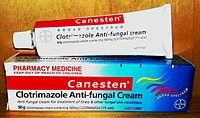
Photo from wikipedia
Fungal infections have shown an upsurge in recent decades, which is mainly because of the increasing number of immunocompromised patients and the occurrence of invasive candidiasis has been found to… Click to show full abstract
Fungal infections have shown an upsurge in recent decades, which is mainly because of the increasing number of immunocompromised patients and the occurrence of invasive candidiasis has been found to be 7-15 fold greater than that of invasive aspergillosis. The genus Candida comprises more than 150 distinct species, however, only a few of them are found to be pathogenic to humans. Mortality rates of Candida species are found to be around 45% and the reasons for this intensified mortality are inefficient diagnostic techniques and unfitting initial treatment strategies. There are only a few antifungal drug classes that are employed for the remedy of invasive fungal infections. which include azoles, polyenes, echinocandins, and pyrimidine analogs. During the last 2-3 decades, the usage of antifungal drugs has increased several folds due to which the reports of escalating antifungal drug resistance have also been recorded. The resistance is mostly to the triazole- based compounds. Due to the occurrence of antifungal drug resistance, the success rates of treatment have been reduced as well as major changes have been observed in the frequency of fungal infections. In this review, we have summarized the major molecular mechanisms for the development of antifungal drug resistance.
Journal Title: Current drug targets
Year Published: 2021
Link to full text (if available)
Share on Social Media: Sign Up to like & get
recommendations!